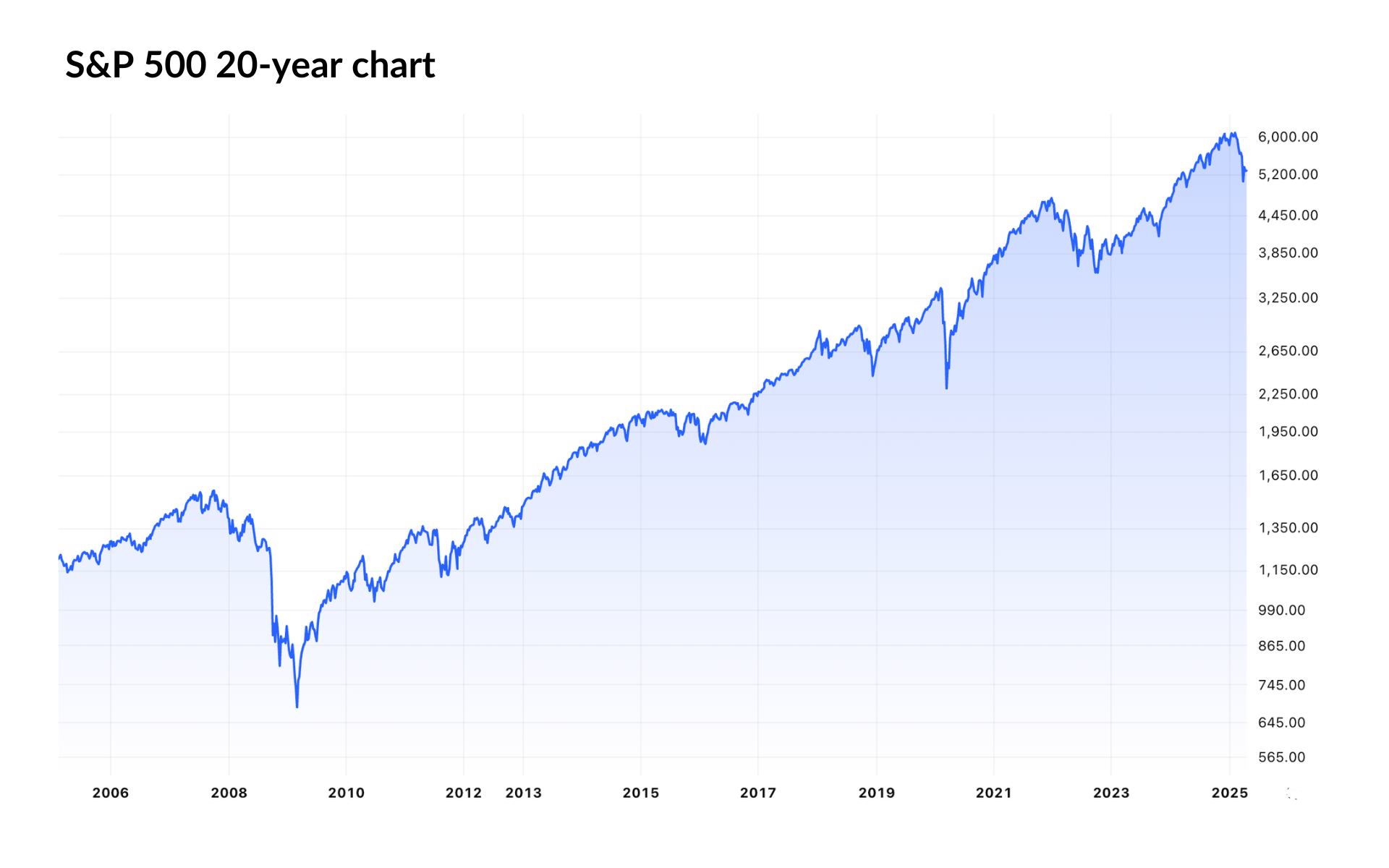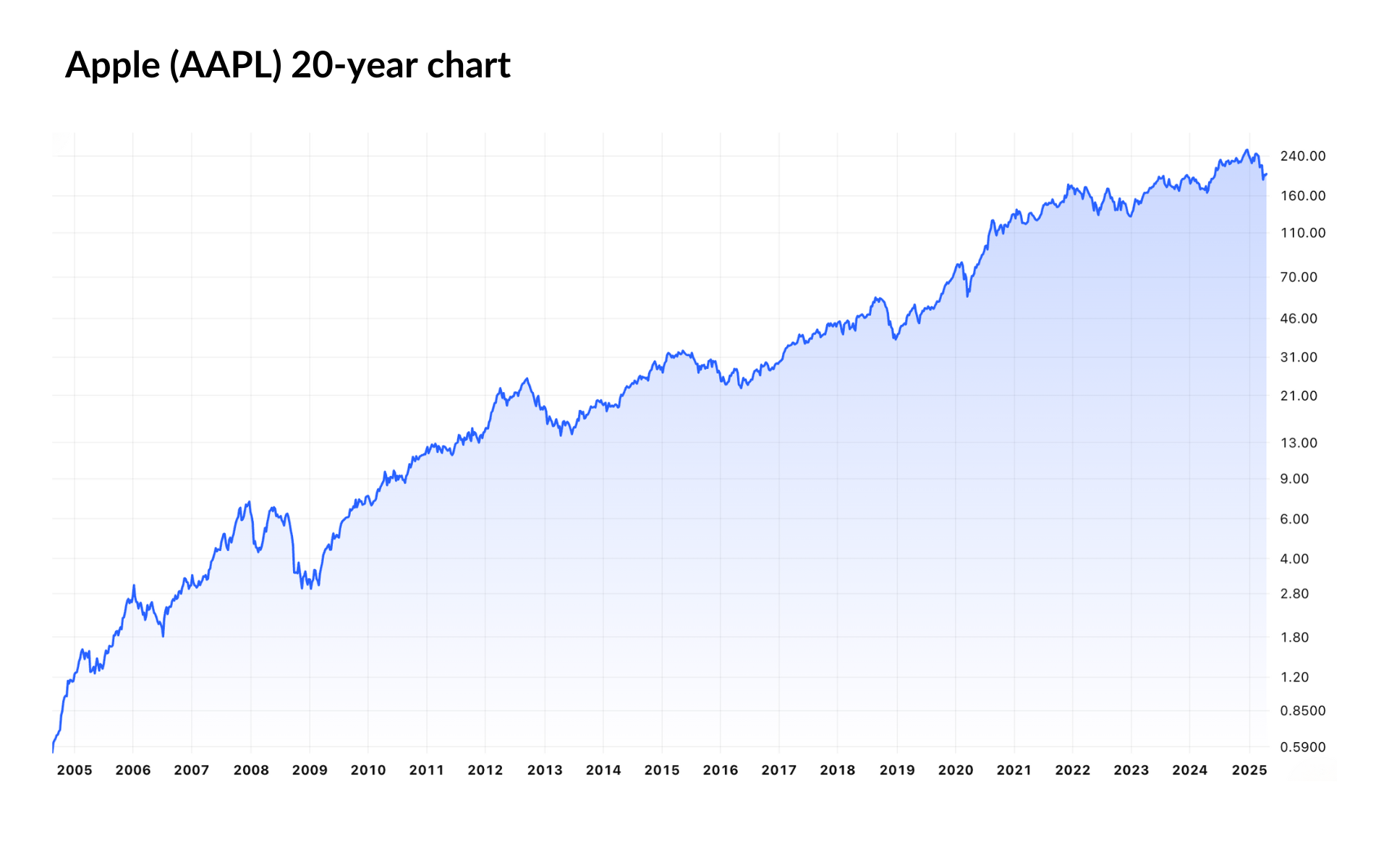Meet the perfect investor (and how you can beat them)
The world’s most perfect investor is likely someone you haven’t even heard of.
Not because they’ve done an amazing job at maintaining their anonymity, but because perfection in markets is impossible.
But what if it was possible?
This hypothetical perfect investor has the Midas touch when it comes to market cycles.
He’s heard the old platitude about "time in the market" beating "timing the market", but he knows he can do better than that.
Call it luck, call it intuition, call it genius, but our investor has had a knack for perfectly selling the exact top of every major bull run over the last 20 years, and buying back in at the exact bottom of every crash.
But while his sense of timing is superhuman, he knows he has some weaknesses as an investor.
He’s never been much of a stock picker, so he prefers to stick to broad index funds as a matter of course.
After saving $10,000 through years of hard work following the Dotcom crash, he decided to invest it all in the S&P 500 index on April 25, 2005.
With his sixth sense for markets, he then proceeds to sell the exact top and buy the exact bottom of the 3 major bull and bear cycles (the GFC, Covid, and the 2022 crash) in the 20 years that follow.

While he might be the greatest investor of all time, he’s also a responsible citizen, so he sets aside the correct amount to cover his tax obligations each time he sells out, before using his entire remaining capital to buy back in.
He’s a pretty standard earner, so he pays an effective tax rate of 37% throughout this period, and manages to get a 50% capital gains discount because he holds his portfolio for more than 12 months each time.
It sounds incredible (and it is quite literally impossible), but how would our perfect investor have fared during this moment in time, and how would he compare to the investor who stuck with the conventional wisdom?
More importantly, would it have been possible to beat him?
And how would the near-perfect investor (who catches the top and bottom within 10% each time) have fared during the same period?
Let’s find out.
The perfect journey
Our perfect investor begins his journey when the S&P 500 is at a humble 1,158.26 points.
He invests his $10,000 at market open on Monday April 25, 2005.
Things tick along nicely for a couple of years, but by October 2007, our perfect investor gets a strange sense of foreboding and decides to sell out with the S&P 500 at 1576.09 points.
He has made a profit of $3,607, which leaves him with $12,940 after he pays an effective 18.5% tax on his profits.
Given his preternatural abilities, he manages to sit out the entirety of the GFC, watching as the world comes to terms with one of the greatest financial crises in history.
By March 6 2009, the S&P 500 had dropped to 666.79 points, and our perfect investor decides the time is right to buy back in.
He re-invests his $12,940 and gets on with his life.
As the world slowly recovers and the US tech sector booms, he watches as his investment continues to grow steadily for more than a decade.
As news of a novel coronavirus starts to dominate the headlines, our perfect investor again decides the time is right to cash out.
He sells his entire portfolio on February 19, 2020, when the S&P 500 hits a record 3393.52. True to form, he has managed to sell at the exact top again and has seen his investment grow to $65,856.
He sets aside money for his tax, leaving him with $56,066.
Having watched the stock market violently sell off as the world goes into lockdown, he then makes the call to buy back in on March 21, when the S&P 500 has dropped to 2191.86 points.
The market mounts a V-shaped recovery and the S&P 500 is soon back at all-time highs, despite the world remaining in the grip of a once-in-a-century pandemic.
Again he watches as stock valuations soar, but is then savvy enough to cash out when things get too frothy. He sells on January 4, 2022, with the S&P 500 at 4,818.62 points.
His portfolio has grown to $123,257, leaving him with $110,827 after tax.
By late 2022, he sees that things have corrected enough and buys back in on October 13 with the S&P 500 at 3,491.58 points.
His $110,827 investment then manages to almost double in less than 3 years, when he has the good sense to cash out again on February 19 2025 before Trump’s tariff war starts in earnest.
With the S&P 500 at a record 6,147.43 points, his initial $10,000 investment is now at $195,127.
After setting some of this aside for tax, he’s now sitting on $179,532 and is waiting for the market to bottom out before he buys back in.
So there you have it - our perfect investor has managed a return of 1,695% in 20 years, thanks to his impeccable market timing.
And yet - it would have been fairly straightforward to have bettered him over that period.
It sounds impossible but it’s actually fairly simple, and gets to the heart of investing strategy.
But first let’s look at how a typical, average investor would have fared.
How would an average investor have performed?
Let’s take the average investor who has taken the “time in the market beats timing the market” message to heart.
Like our perfect investor, the average investor puts $10,000 into the S&P 500 on April 25, 2005.
Because he knows he can’t perfectly time the market, and plans on holding for the long-term anyway, he never sells any part of his investment.
After 20 years and multiple boom and bust cycles, he has grown his initial $10,000 investment to $53,074 by February 2025.
After tax, that leaves him with $45,105, a very respectable return, but far below that of the perfect investor.
But what if we took the slightly more realistic scenario of the investor who is close-to-perfect in timing the market?
The cousin of our perfect investor, the near-perfect investor, managed to sell 10% off the exact top and buy 10% off the exact bottom over the same time period, which would still make him arguably the greatest market-timer alive.
How would he fare over 20 years?
While he still can’t quite match his cousin, his ability to time the market leaves him with a return of $110,736 by February 2025.
After he pays the last bit of tax, he’s left with $95,037.
Much better than the average investor but still quite a way off the perfect investor.
So even in the still-unlikely scenario that you almost catch the top and bottom of every major market cycle over the last 20 years, you’re still well behind the perfect investor.
So how can you possibly beat him?
How to beat the perfect investor
While the perfect investor possesses a superhuman sense of timing, he is still employing a diversified approach to investing.
Of course, there’s absolutely nothing wrong with that.
In fact, Warren Buffett himself recommends that the best thing a normal investor can do is buy an S&P 500 index fund.
But it does mean he can be outstripped by a successful high-conviction investor.
Buying and holding one of dozens of stocks on the US stock market would have given you a better return.
You didn’t even need to find a penny stock that caught fire (although there were plenty of those as well).
Simply investing in some of the biggest companies in the world was enough for you to outperform the perfect investor, provided you simply held.
If you had instead bought $10,000 of Apple (NASDAQ: AAPL) stock back in April 2005, you’d have just over $2 million if you sold at the recent all-time high.
After tax, that would have left you more than $1.6 million.

It’s a similar story with Microsoft, Broadcom, Mastercard (which went public in 2006), Amazon, Alphabet, Eli Lilly and others.
Of course, picking a winning stock over a 20-year timeframe is much easier said than done, and picking the wrong stock would have meant you significantly underperformed the perfect investor.
But it does illustrate an interesting point about how we approach long-term investing.
Even someone who can perfectly anticipate and time the market may underperform someone who makes a high conviction, long-term bet.
Food for thought.

2 topics
1 stock mentioned
